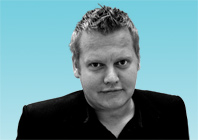Martyn Day has a chat to Bernard Charlès, CEO of Dassault Systèmes, about the fundamental changes being made to its core products. Most notably the move to a Catia-based chassis for SolidWorks and challenges in the PLM space
Dassault Systèmes is one of the leading CAD developers having both the Catia and SolidWorks brands. Operating in the high, mid-priced and free modelling tool markets, the company’s mantra is 3D for all.
During August I had the rare opportunity of interviewing the company’s enigmatic leader Bernard Charlès. While the full interview will be in the October edition of DEVELOP3D some of the conversation points seem worth raising now.
Charlès has been CEO of Dassault Systèmes (DS) since 1995 and became president in 2002. In that time he has provided plenty of vision and growth to match. But the company’s current strategy stands at a Rubicon, concerning a move to cloud computing, changes to a Catia-based chassis for SolidWorks and challenges in the PLM space.
Solidworks and V6
Probably the most important and far reaching changes in play will be to the highly popular SolidWorks modelling tool.
To date, the Boston-based company has been left to its own devices and its Parasolid-based modelling tool has been a trailblazer the mid-priced manufacturing market.
Last year the DS-owned company demonstrated a cloud-based SolidWorks on an Apple Macintosh, which had V6, the current version of Catia, subtly hidden in the top corner of the screen. Indeed, DS had decided that SolidWorks would move to a Catia V6-based CGM engine and through V6’s Enovia technology will become ‘cloud capable’ where teams of engineers can share models.
This is probably not the vision of running CAD through a web browser but with just the data, using the cloud for distribution.
Charlès told me that this new version would not be available this year. As SolidWorks and Catia will share the CGM engine then they will be able to talk with one another. He also said that the new SolidWorks will support Parasolid and all its legacy models, with the user choosing which mode to operate on, depending on the requirements of the project.
Users therefore need not worry about all the data they have created and will have additional possibilities in the way they work.
V6 and Enovia
Much has been said by DS’ competitors about some high-grade defections of long term DS customers to other CAD systems.
Jim Hepplemann of PTC pointed out that with V6, DS was forcing customers to adopt a PLM system that they didn’t want and PLM was so important that it was easier to change the CAD system than the PLM backbone.
This year Dassault Systèmes will launch a free AEC modelling application for the iPad and web browser, together with a fully featured, commercial desktop application sold through the SolidWorks channel
Charlès was very defensive, saying that in the past a number of customers had stated their intention to leave the fold but never actually had. In fact they had always ended up buying more licences.
Charlès complained that he couldn’t say more people had switched as they didn’t want to go on record stating it was such a commercial advantage.
The impression he wanted to create was that V6 was a huge success and many large companies were phasing in the technology to their projects.
While previous generations of Enovia have left many unconvinced, V6 is based on its presence for sharing data seamlessly over the cloud.
AEC
Over three years ago, Charlès told me of the intention to take Catia into the AEC modelling market.
While a variant from Gehry Technology was out there, Charlès was very specific about taking on Autodesk Revit in the mid-price market. Even then, he said he knew he could not do it until he had Catia running in the cloud.
True to his word, this time Charlès feels that DS is on the verge of delivering something to the market.
This year, DS will launch a free AEC modelling application for the iPad and web browser, together with a fully featured, commercial desktop application sold through the SolidWorks channel. Based on Catia V6, Charlès showed me complex animations created by Chinese construction firms using this beta technology.
The move will be an interesting one as, while Autodesk’s Revit is now very capable, it’s incredibly resource hungry and models swell rapidly. Catia is already used to modelling complex products like passenger jets and when cloud-based will have access to huge processing power and memory.
I got the feeling that the DS will be initially focusing on ease of use, scalability and a collaborative Enovia hub. Other divisions of DS will also be contributing with simulation from Simulia and sequencing from Delmia.
While engineers may not be super interested in AEC, it will certainly be worth watching because the technology is a trial for the cloud-generation of DS Catia and SolidWorks products.
Conclusion
Charlès is ever the visionary and what he has envisioned usually comes to pass, eventually. This is a crucial time for DS as it makes fundamental changes to the infrastructure of its core products, embraces the cloud and enters a new market.
While V6 and Enovia will have a slow adoption, the launch of the next SolidWorks will be a potential flashpoint as its users are passionate about their tool. DS competitors are already starting to circle.
Martyn Day speaks to Bernard Charlès, CEO of Dassault Systèmes
Default






